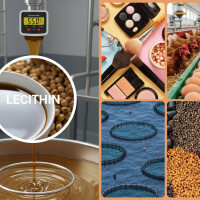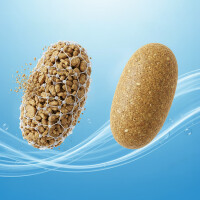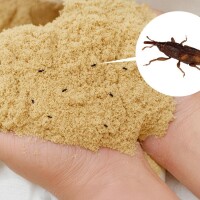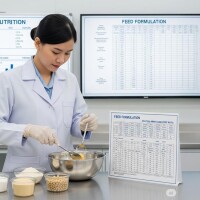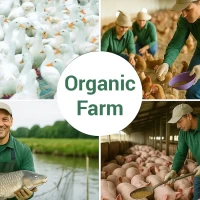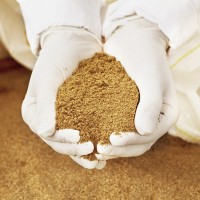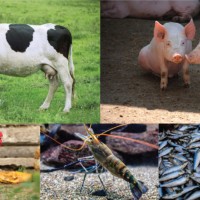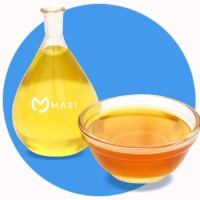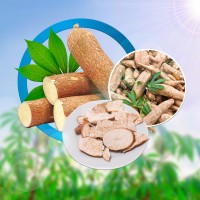The Crucial Role of Protein in Animal Nutrition: What You Need to Know
In the contemporary livestock industry, a precise understanding and efficient utilization of protein content in animal feed are paramount for fostering rapid, healthy animal growth and ensuring superior economic returns. However, many livestock producers still contend with misconceptions regarding the definition of crude protein, the methodology for calculating protein levels in animal feed, and the true value inherent in diverse protein sources. This article aims to provide comprehensive clarity on the pivotal role, optimal levels, and selection of appropriate protein sources within animal feed formulations.
What is crude protein in animal feed?
Crude protein in animal feed refers to the protein content present within raw materials or animal diets. Fundamentally, protein is a nitrogen-containing organic compound, meticulously structured from chains of amino acids. Within the livestock industry, the term "crude protein" is commonly employed to quantify the protein levels in raw materials. So, what exactly constitutes crude protein? It represents the total nitrogen content found in the ingredient, multiplied by a conversion factor of 6.25 (given that protein on average contains 16% nitrogen).
Calculating crude protein in animal feed: Protein (or Crude Protein) is determined by the formula: % Nitrogen x 6.25.
However, it's crucial to note that not all crude protein is digestible and absorbable. Consequently, the concept of "digestible protein" emerged to accurately reflect the actual amount of protein assimilated by the livestock, thereby directly influencing growth performance and overall productivity.
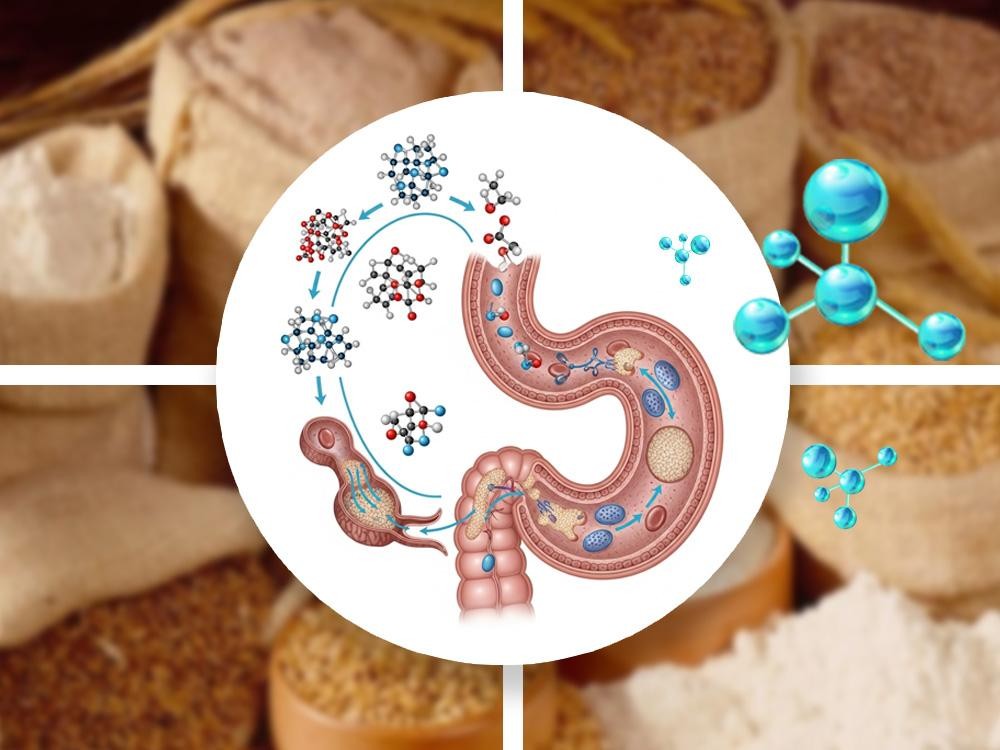
A precise understanding of how crude protein is formed and assimilated in animal feed is the foundational step towards formulating optimized dietary regimens.
The crucial role of crude protein with livestock
Protein stands as one of the three primary macronutrient groups, alongside carbohydrates and lipids. For livestock, protein plays a **vital, indispensable role** in development and the sustenance of critical life functions:
- Body structure: protein serves as the fundamental constituent of muscle, tissues, enzymes, hormones, antibodies, blood, and eggs, etc.
- Cell growth and regeneration: especially important during growth, reproduction or recovery after illness.
- Energy production: in the event that carbohydrates and fats are not sufficient, proteins will be broken down to produce the necessary energy.
However, both protein deficiency and excess negatively impact performance:
- Protein deficiency: reduced growth, compromised immunity, and diminished productivity.
- Protein excess: increased feed costs, disturbances in gut microbiota, and heightened heat stress.
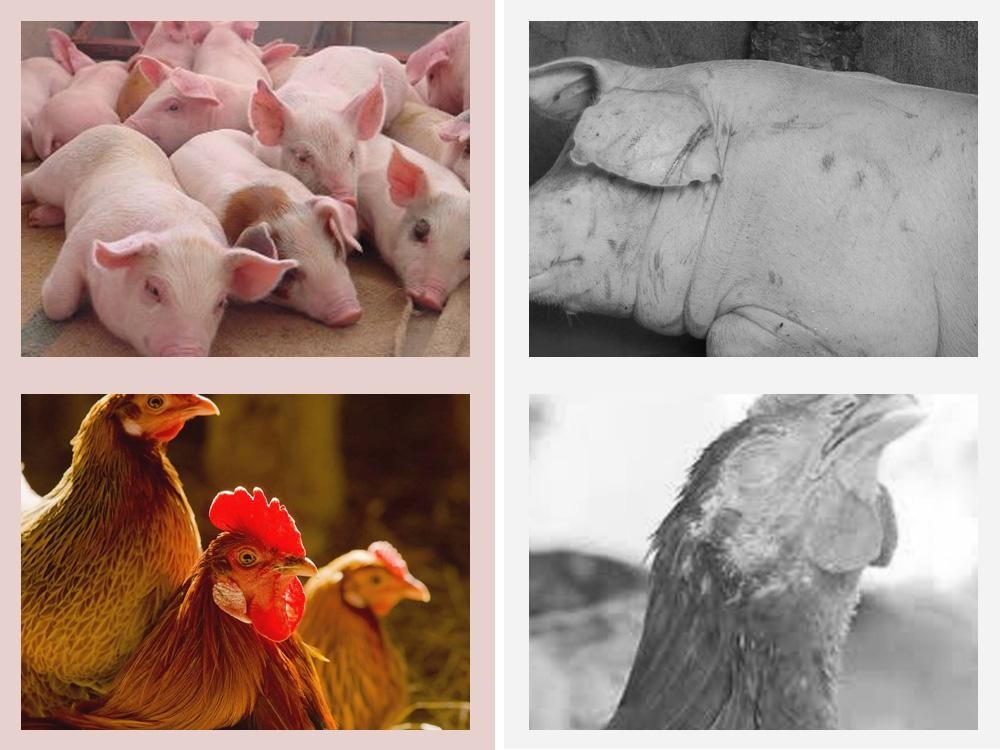
Ensuring the precise inclusion of crude protein in animal feed not only fosters robust livestock development but also positively impacts their immune response, digestive health, and overall economic efficiency.
Determining the ideal crude protein percentage
There is no universally fixed figure applicable to all livestock. Each species - developmental stage and production objective will inherently possess distinct protein requirements. Critically, the focus must be on adequately supplying essential amino acids, rather than solely concentrating on the crude protein percentage.
For instance:
- Post-weaning piglets: protein levels can be reduced from 21% to 15% with adequate synthetic amino acid supplementation, yet still achieve robust growth.
- Broiler chickens: A 2-3% reduction in protein content does not adversely affect the Feed Conversion Ratio (FCR) - which indicates the amount of feed required per unit of product, additionally leads to cost savings and reduced water consumption.
Modern animal nutritionists advocate for the concept of ideal protein, which entails supplying the precise types and optimal ratios of amino acids required by livestock, thereby meticulously minimizing any unnecessary excess.
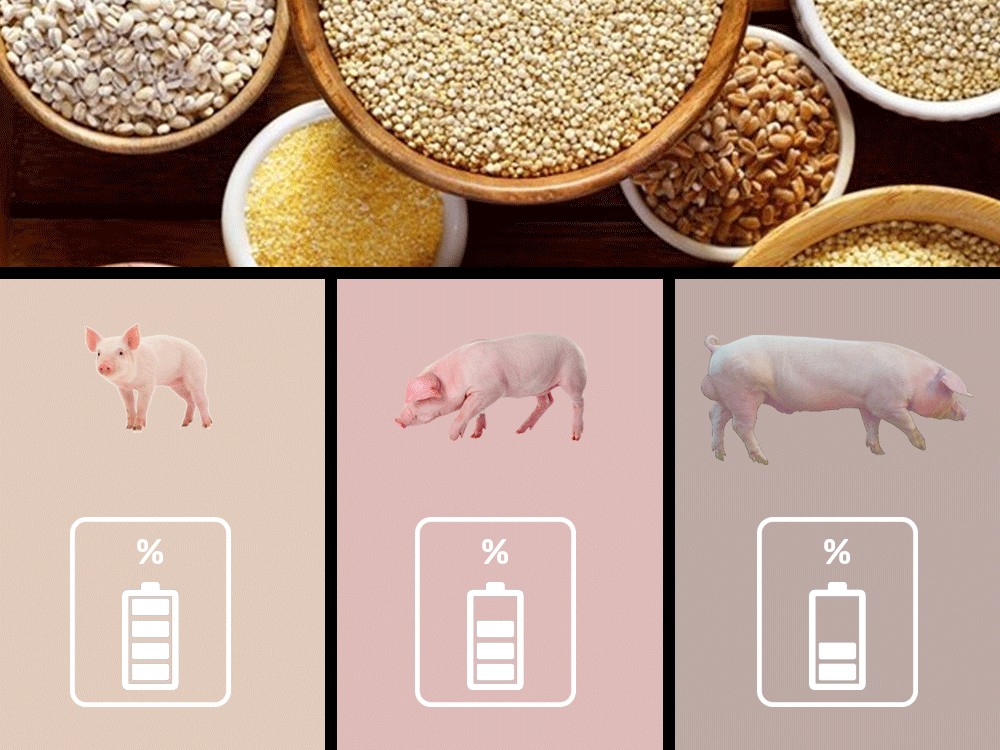
Each distinct developmental stage necessitates a specific crude protein ratio in the animal feed.
Primary protein contributors to livestock feed
Protein is primarily sourced from two main categories: plant-based and animal-based. Among these, marine-derived products are highly regarded due to their superior protein content, high digestibility, and completeness of essential amino acids.
1. Fish meal
Fish meal is a highly bioavailable source of animal protein, widely incorporated into feed formulations for pigs, poultry and aquaculture. In particular, marine fish meal can boast a protein content of 55–65%, effectively meeting the strict protein requirements of animal diets. Furthermore, fish meal provides trace minerals, vitamins and essential fatty acids necessary for robust growth.
Key advantages:
- Elevated protein content.
- Excellent digestibility.
- Balanced essential amino acid.
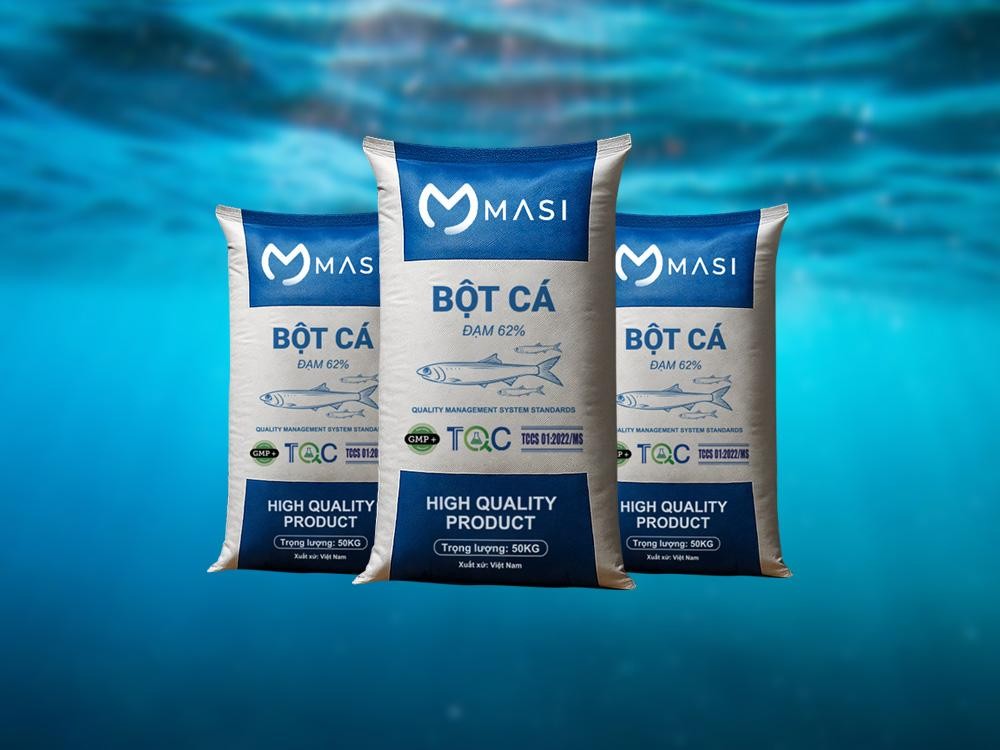
Masi Fish meal: the high-quality protein solution for animal diets
2. Fish soluble
Fish soluble is a product derived from the enzymatic hydrolysis of marine fish, featuring easily assimilable protein in the form of peptides and free amino acids. The protein content in fish soluble typically ranges from 25–35%, playing a crucial role in efficiently supplementing protein levels in animal feed.
Key advantages:
- Delivers highly digestible protein.
- Enhances palatability for livestock.
- Facilitates the assimilation of other vital nutrients.
3. Fish oil
While not a primary protein source, fish oil plays a crucial supportive role in protein absorption and metabolism. Its inclusion in feed formulations significantly enhances protein utilization efficiency by providing vital energy, essential fatty acids (EPA, DHA), and bolstering the immune system.
4. Rice bran and broken rice for livestock feed
Beyond animal protein sources, rice bran and broken rice are two widely utilized plant-based ingredients in livestock diets, particularly for swine and poultry. Rice bran typically offers a protein content ranging from 11 - 14%, while broken rice can provide approximately 7 - 9%, depending on its purity.
Although they may not possess the balanced essential amino acid profile found in fishmeal, the vegetable protein derived from rice bran and broken rice plays a crucial role in diversifying raw material sources, reducing production costs, and supplementing the energy content of feed formulations.
Key advantages:
- Cost-effective pricing.
- Effortless blending and abundant supply.
- Provides a consistent foundation of protein and energy.
Key considerations for protein supplementation
-
It is crucial not to equate a high crude protein content with superior efficacy. What livestock genuinely require is a precisely balanced ratio of essential amino acids, rather than merely an overall crude protein percentage.
-
Excess protein offers no additional benefit and can, in fact, be detrimental: surplus protein will ferment in the gut, producing harmful compounds such as ammonia, phenols, and indoles. This disrupts the microbial balance, leading to digestive disorders and diminished nutrient absorption.
-
Protein deficiency and amino acid imbalance: inadequate protein or an imbalanced amino acid will impair growth, compromise immune function, diminish reproductive performance, and hinder recuperative abilities.
-
Formulate diets based on the ideal protein concept: this principle emphasizes that excessive protein levels are unnecessary; instead, the focus should be on providing the correct types and optimal ratios of essential amino acids.
-
Flexibly integrate both animal-based protein sources (e.g., fish meal, fish soluble) and plant-based proteins (e.g., rice bran, broken rice) to achieve an optimal balance, reduce costs, and still ensure comprehensive nutritional integrity.
-
Regularly monitor livestock performance to facilitate timely dietary adjustments, thereby minimizing waste and enhancing protein utilization efficiency.
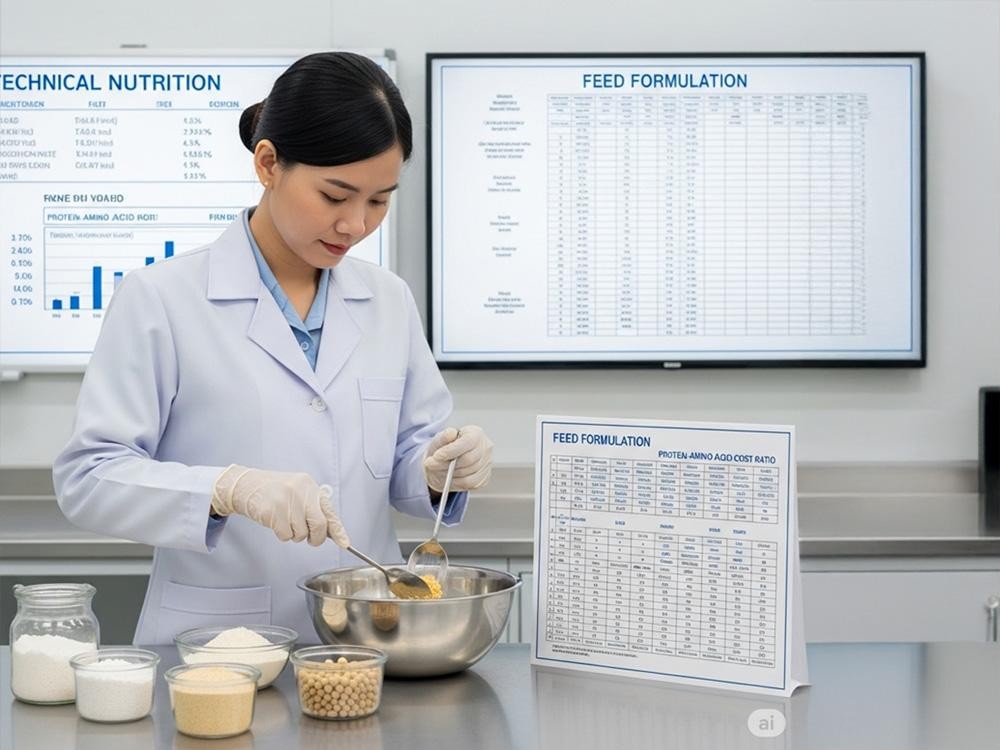
Optimizing crude protein levels in animal feed necessitates a scientific approach and the agile integration of diverse raw material sources.
Accurate understanding of protein in animal feed is paramount for enhancing livestock farming efficiency, optimizing nutrition, and fostering robust animal growth. Modern livestock producers must transition from the mindset of "higher protein equals better" to one of "balanced, specific protein types and essential amino acids" to ensure both economic viability and superior animal performance.
--------------------------------------
Contact information:
Masi
Office: 7th Floor, Giga Mall, 240 - 242 Pham Van Dong, Hiep Binh Ward, Ho Chi Minh City
Factory: Lot C11, Fish Sauce Processing Area, Phu Thuy Ward, Lam Dong Province
Factory: Hoi Hamlet, Kim Son Commune, Dong Thap Province
Email: Cs@masi.vn
Call center: 0909 411 885 - 0911 401 955 - 0979 045 766
Facebook: https://www.facebook.com/masi.fishmeal
LinkedIn: https://www.linkedin.com/company/masifishmeal/


